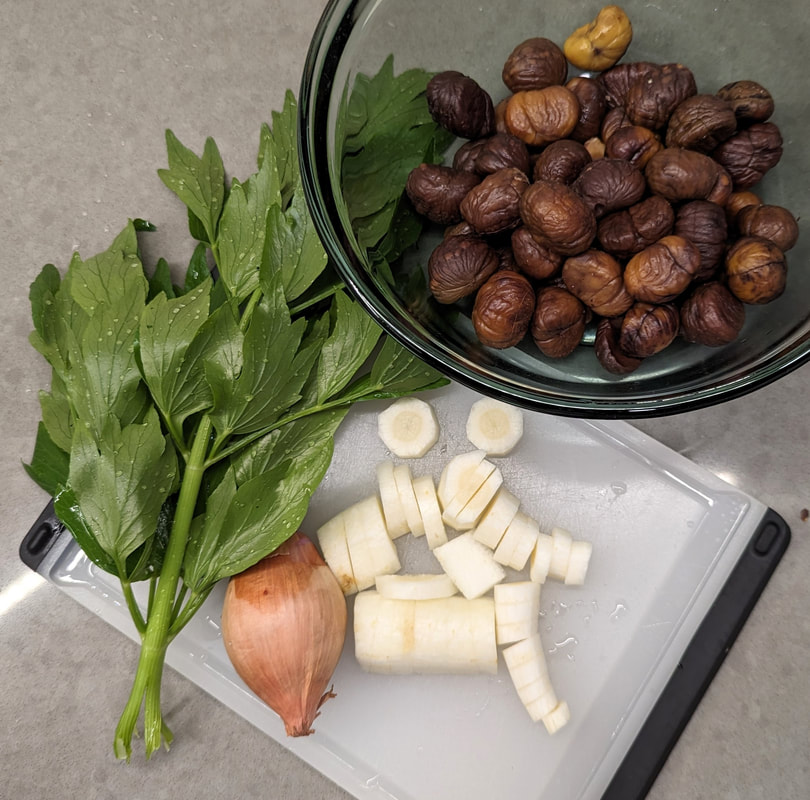|
While on the same trip we described last week (properdegenerate.com/blog/the-wine-illuminati), we spent New Year’s Eve near a town of 4000 people called Poligny, France. It’s colloquially known as the capital of Comté. Comté is a very famous French cheese – one the best in the world – which is produced throughout this region. Though we may later do an entry on Comté, we would like to discuss why Poligny is REALLY famous. To people who fancy the strange and the macabre, it is not known for being a cheese haven, but as the town where the first three "werewolves" were executed in France. Way back in 1521 C.E., there was a series of brutal attacks and murders. Both adults and children were victims and wolves were sometimes spotted leaving the crime scenes. Legend has it that, after one attack, the wolf was unsuccessful in making a poor local man its next meal, and the hairy beast was injured. A blood trail led French authorities to the home of Michel Verdun. At the time, they found poor Michel's wife mending his wound. They naturally surmised that this happened when Michel was in the form of a wolf. This so-called “sympathetic wounding” (i.e., where an injury in animal form carries over into human form) was a dead giveaway that the authorities clearly had a werewolf on their hands. After a brutal interrogation of Michel, two other metamorphizing miscreants were fingered for the crimes: Pierre Bourgot and Philibert Montot. This pernicious pack of putative werewolves were accused not only of shapeshifting and murder, but also eating human flesh. French officials were a bit sensitive to cannibalism at the time and they didn’t just issue a ticket, a stern warning, or 16th century community service. Instead, all three men were quickly executed and burned for their crimes, both the real (i.e., murder) and the imaginary (rampant werewolfery). Fast forward 500 years. A church in Poligny is now supposed to have the only contemporary paintings of the events described in this dark tale. Sadly, records of even big events like these were a bit shoddy half a millennia ago. But, fortunately, the intrepid proper degenerate team located both the town and the correct church (which now contains a museum)! One of us was very excited to see this little bit of early Renaissance history in person. These historical hopes were quickly dashed, though. After managing to park the rental car in a much-too-small downtown spot, we walked to the church. “Hmm... that looks like construction equipment." Not good... Walking closer to the church, we saw cranes, other construction vehicles, and metal beams on the ground. Alas, the church was undergoing some sort of massive repair or remodel. Not only could we not see the paintings, but we couldn’t even get a quick tour. We walked around the building, trying to get some useful shots, but it felt a bit similar to the end of National Lampoon’s Vacation bereft of the laughs (or the kidnapping of John Candy, for that matter). Somewhat dejected for this failure of appropriate trip-planning and inability to see werewolf paintings, we decided to ease our pain with local French cuisine. But what to eat? What would make the absence-of-werewolf induced pain go away? Maybe google will have an answer? Safely back in the car, we searched online for local specialties as well as French New Year’s Eve traditions. Luckily, we hit upon a winning response that covered both: roasted chestnut soup. Shockingly, we had enough equipment in our AirBnB to put it all together. Feeling a bit better, we drove to the nearest Intermarché and found everything we needed to have a happy French New Year’s Eve dinner. The French love their chestnuts. Though the best are grown a little southeast of Nice, they are all over the place. Preparing these delightful nuts can be somewhat annoying, though, as they cannot be eaten raw. They must also be cooked to remove the hard outer shell. Enjoying them has been a French tradition since the 10th century, and, from the 13th century on, they were used as a flour, often replacing wheat in sweets. The nuts are so frequently used that, at least in some parts of France, chestnut trees are called "bread trees". It’s extremely possible that spectators to the execution of the rascally werewolves of Poligny were munching on chestnut flour pastries. When we got back to the hotel, we made our first vegetarian version of this classic dish, sticking fairly close to a traditional recipe. It’s gone through several iterations since then, and we will now share what we consider the best version with you. Recipe
Directions
Notes: * Leuștean (aka lovage) is a herb common in Southern European cooking. In Romania it is much beloved and often used as the final accent to their famous soups. It is similar in flavor to celery mixed with parsley, but has a stronger and spicier flavor. If you are interesting in having a steady supply, it can be grown as a herbaceous perennial from seed in the U.S.. It grows like a weed, even in poorer soils, and especially if it isn't harvested regularly. In other words, there's no excuse for you not to grow this fun herb, even if you are a terrible gardener.
1 Comment
|
Categories
All
Archives
June 2025
|





 RSS Feed
RSS Feed